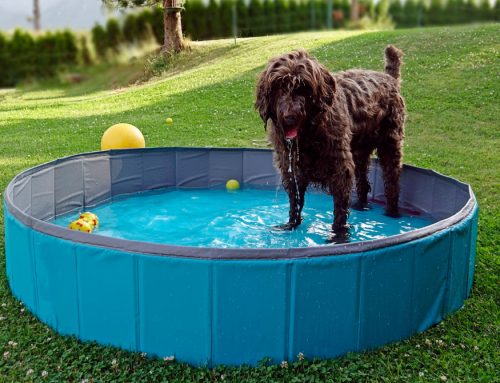Tips to protect your pet in the winter
Unseasonably cold weather is on the way, which means it’s time to give special attention to your pets and livestock, both inside and out.
Cold weather creates its own set of stress for all animals, but your pet needs your undivided attention now more than at almost any time of the year. Here are some winterizing tips for optimizing your animal’s comfort and well-being:
When the temperatures reach sub-zero, it’s time to give the outdoor cat and dog a break and invite them in, even if it’s in the garage. This goes for Northern breeds like Siberian huskies or Malamutes as well as medium-coated German shepherds, golden retrievers, and others in our region where they may not be acclimated to such extremes.
By “inside,” that doesn’t mean letting dogs and cats in and out of a warm house from night to day. Creating an abrupt temperature contrast can increase the risk of some infectious diseases. Consider housing them in the shelter of a well-built doghouse or bringing them into a tool shed or garage.
When you take your inside pooch out for “bathroom break,” stay out with them. If you’re cold enough to go inside, it probably is too cold for the pet to stay out much longer as well.
When you bring a pet in, wipe its paws and underside, making certain there are no ice balls clinging between the toes or on the sole of the foot. They can cause frostbite to an animal that is left outside for a significant time in sub-zero temperatures.
If you opt not to bring the dog inside, make certain its shelter is clean, dry and well insulated with straw, wood shavings or a blanket. Animals drag a lot of moisture onto their bedding from every trip outside in snow. Plan on changing the bedding as frequently as necessary or simply placing it in the dryer for a warm-up. Equally critical, position the opening, which should have a door flap, away from the direction in which snow and wind usually comes.
Outdoor cats will seek warmth and sometimes this includes near or on a car engine. This means that if they don’t move when you go out to start the engine the next time, they can be seriously injured or killed. Before starting the engine, rap on the hood a couple of times to chase them off from beneath the hood.
Pets that move about on sidewalks, driveways or streets run the risk of picking up rock salt, ice and other chemicals in their foot pads. Each time they are brought in, make certain to wipe all four feet thoroughly. There is a tendency for them to lick the salt off their feet, which can cause an inflammation of the digestive tract.
Keep an eye on your pet’s outside water. If it is not heated, it will need to be changed several times daily when temperatures dip far below freezing. Ice is not a substitute for clean water. Pet stores sell heated bowls, which can prevent water freezing.
For short-coated breeds like greyhounds, Boston terriers, and Chihuahuas, you might want to put them in a protective sweater before taking them outside. They will become chilled quickly after leaving a 72-degree house and walking onto single-digit-temperature turf. Also realize, sweaters are not a substitute for shelter. They can get wet and actually remove more heat from an animal than they conserve.
Be particularly careful when escorting elderly, arthritic pets outside. They will become stiff and tender quickly and may find it difficult to move about in the snow or ice. Keep them tethered tightly to your side if the route to the yard is icy. A bad slip can cause a ruptured disc, broken leg or other major injury.
If you live near a pond or lake, don’t allow your pets or livestock to run loose without some thought on your part. They may head for thin ice and fall through if they are not familiar with icy ponds. It is very difficult to escape these watery graves and equally challenging for you to reach the site safely.
Nutrition is a particularly important concern. Outdoor pets require more calories in the winter to generate energy to ward off the cold. As a result, add 10 to 15 percent more to its daily diet to allow it to meet those needs. Another way to meet cold weather calorie requirements is by adding some fats to their regular ration. Be careful though, fats can lead to diarrhea and dehydration if too much is added.
Horses and other livestock need a windbreak, cover, warm bedding, abundant high-quality feed, and fresh water, too. Cold weather alone won’t make healthy horses ill. But if exposed to soaking rains, snow and wind, they run the risk of catching pneumonia. Bedding like thick layers of straw or shavings is critical, since it will keep the animals off the cold, wet ground. Like pet shelters, the open side of any livestock enclosure should be faced be away from prevailing winds. Again, water must be heated or changed several times daily. A reduction in water intake and the resulting dehydration in horses can trigger colic.








Leave A Comment